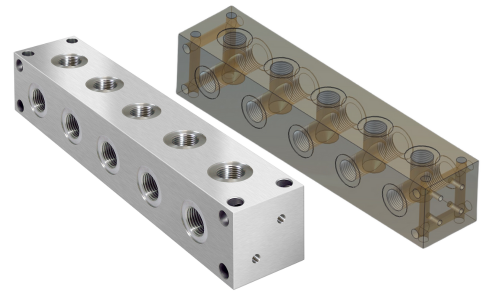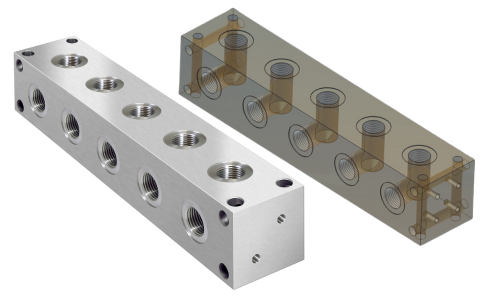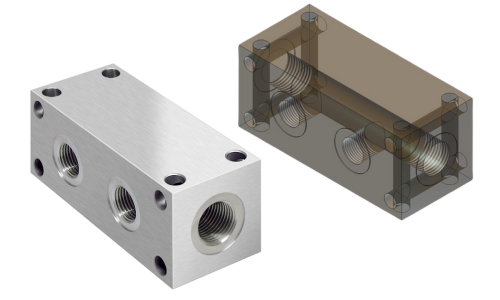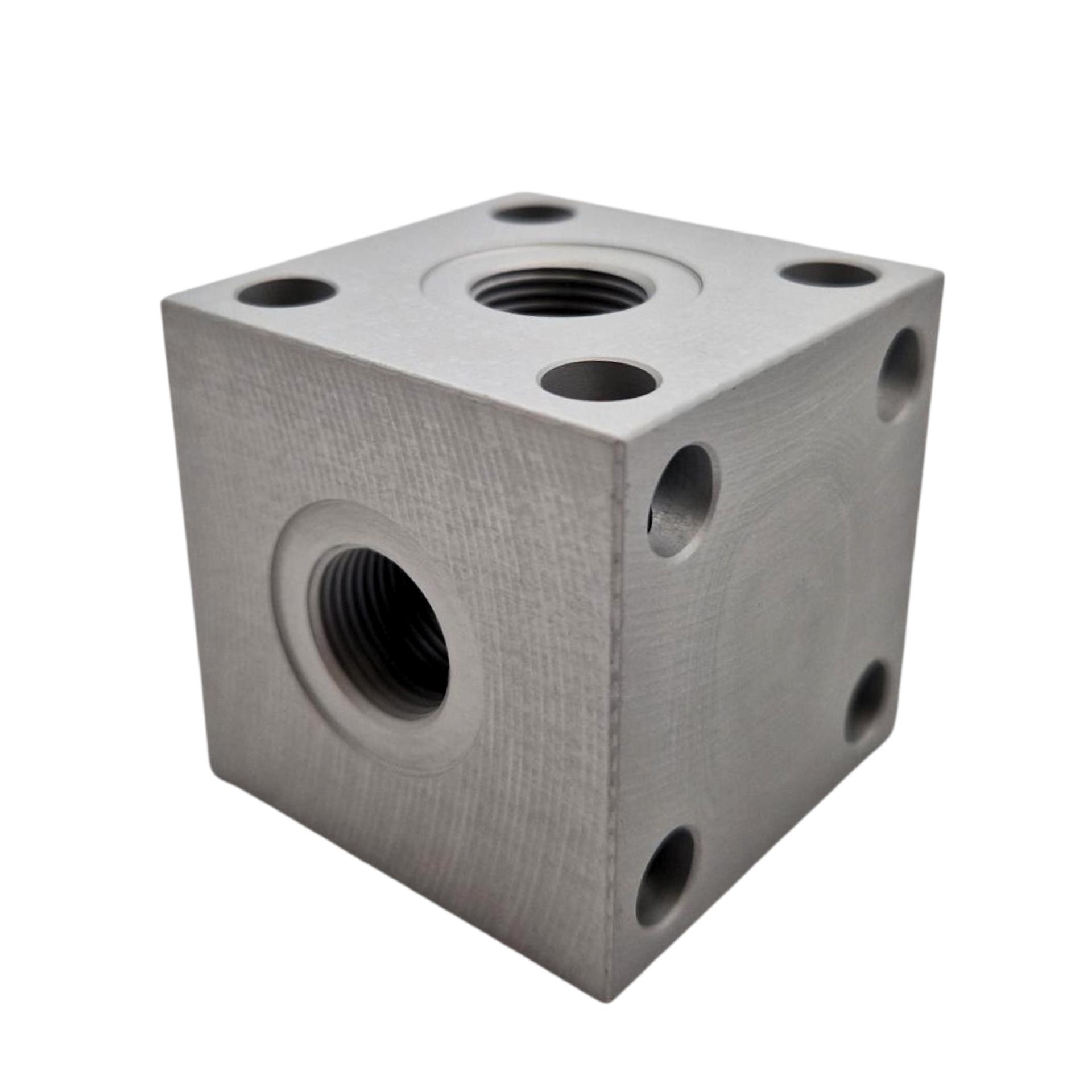Understanding the Purpose of a Manifold Valve: Key Functions and Applications
A manifold valve is a device used in fluid systems, particularly hydraulic and pneumatic applications, to regulate and direct the flow of liquids or gases. It consists of a block or structure with multiple ports (inlets and outlets) that allow the connection of various valves, instruments, and actuators. Manifold valves consolidate several flow control operations into a single compact unit, making it easier to manage complex flow systems, reduce the need for multiple fittings, and simplify maintenance. Manifold valves are often used in industries such as oil and gas, chemical processing, manufacturing, and any systems where efficient flow control is necessary.
.png)
What are the types of manifold valves?
- 2-way and 3-way manifolds: These are typically used in instrumentation systems to isolate, vent, and equalize pressure.
- Hydraulic manifolds: Used in hydraulic systems to direct fluid to different actuators and control the system's functions.
- Pneumatic manifolds: Used in air systems to control air flow and distribution to various tools or machines.
Where are manifold valves commonly used?
Manifold valves are often used in industries such as oil and gas, chemical processing, manufacturing, and any systems where efficient flow control is necessary.
What are the benefits of using a valve manifold?
· Reduced installation time
· Compact design
· Easier maintenance and troubleshooting
· Lower risk of leaks
· Better control over fluid or gas flow
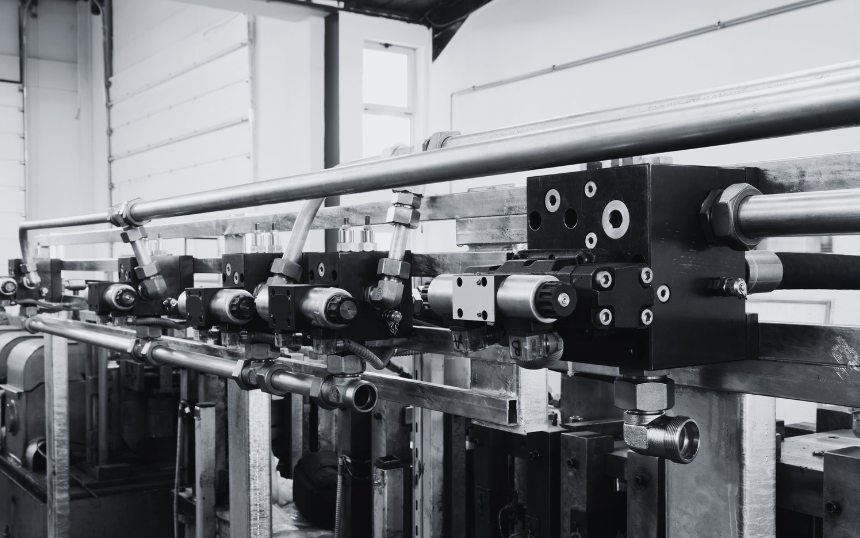
Design of a Hydraulic Manifold
A hydraulic manifold is a block or panel containing multiple hydraulic valves, ports, and channels designed to manage fluid flow within a hydraulic system. Its primary role is to direct and regulate the flow of hydraulic fluid between pumps, actuators, and other components. Similar to a switchboard in an electrical circuit, it serves as an operator-controlled gateway that enables the control of fluid flow between various components in a hydraulic machinery.
Key design features include:
- Valves: The manifold integrates various types of hydraulic valves such as directional control valves, pressure relief valves, flow control valves, and check valves. These valves control the direction, pressure, and flow rate of hydraulic fluid.
- Channels and Ports: Internal channels connect various ports that allow hydraulic fluid to flow through different components of the system. The number and arrangement of ports depend on the complexity of the hydraulic system.
- Mounting Configurations: Manifolds are designed to fit into specific hydraulic systems and can come in stackable configurations (modular) or as a custom-designed block (integrated) for specific applications.
- Valve Cavities: The manifold features valve cavities or pockets, designed to hold different valve types. The cavities are standardized to fit cartridges, allowing easy replacement or customization of the manifold.
- Pressure Gauges and Sensors: Many hydraulic manifolds are equipped with pressure gauges, sensors, or ports to monitor system pressure and performance.
What Hydraulic Manifolds do we offer?
- T Type Manifold - A T manifold is a type of pipe fitting used in plumbing, fluid dynamics, and HVAC systems that has three openings, forming a "T" shape. It is used to split or combine fluid flow in a system. One inlet allows flow in, while the other two outlets (or vice versa) direct flow in different directions.
- L Type Manifold - An L-type manifold is a type of manifold that resembles the shape of an "L" and is used in piping and fluid systems, including hydraulics and plumbing. The design of the manifold allows for fluid to change direction at a 90-degree angle, effectively redirecting the flow between two perpendicular lines.
- Parallel Manifold - A parallel manifold in hydraulic or fluid systems is a type of manifold designed to distribute flow evenly to multiple circuits or components that operate simultaneously, often in parallel. In a parallel manifold, multiple ports are arranged side-by-side, allowing fluid to flow through separate channels independently but from a common source.
- 4 Port Cross Manifold - A 4-port cross manifold is a type of hydraulic or fluid manifold that features four separate ports arranged in a cross or "X" configuration. It allows fluid to flow between the four connected lines, making it useful for applications where multiple fluid paths need to intersect or be redirected.
What materials are hydraulic manifolds made from?
Hydraulic manifolds are typically made from aluminium, steel, or other materials that can withstand the pressures and environmental conditions of the application.
When choosing between aluminium and galvanized steel for hydraulic manifolds, several factors should be considered, including weight, corrosion resistance, cost, and application.
Flowfit: Leading UK Provider of Hydraulic System Components and Accessories
Experience the advantage of reduced lead times, courtesy of direct sourcing from Italy. Furthermore, here at Flowfit, we maintain substantial stock levels, ensuring that these high-quality hydraulic manifolds are readily available to meet your needs promptly and reliably. Elevate your hydraulic systems with the precision and dependability from the brand Oleorama Marchesini for Italian-manufactured manifolds.
For further details, get in touch with our team of hydraulic specialists today!
The total one-stop supplier for hydraulic components & systems
Get in touch
Parys Road
Ludlow
Shropshire
SY8 1XY




